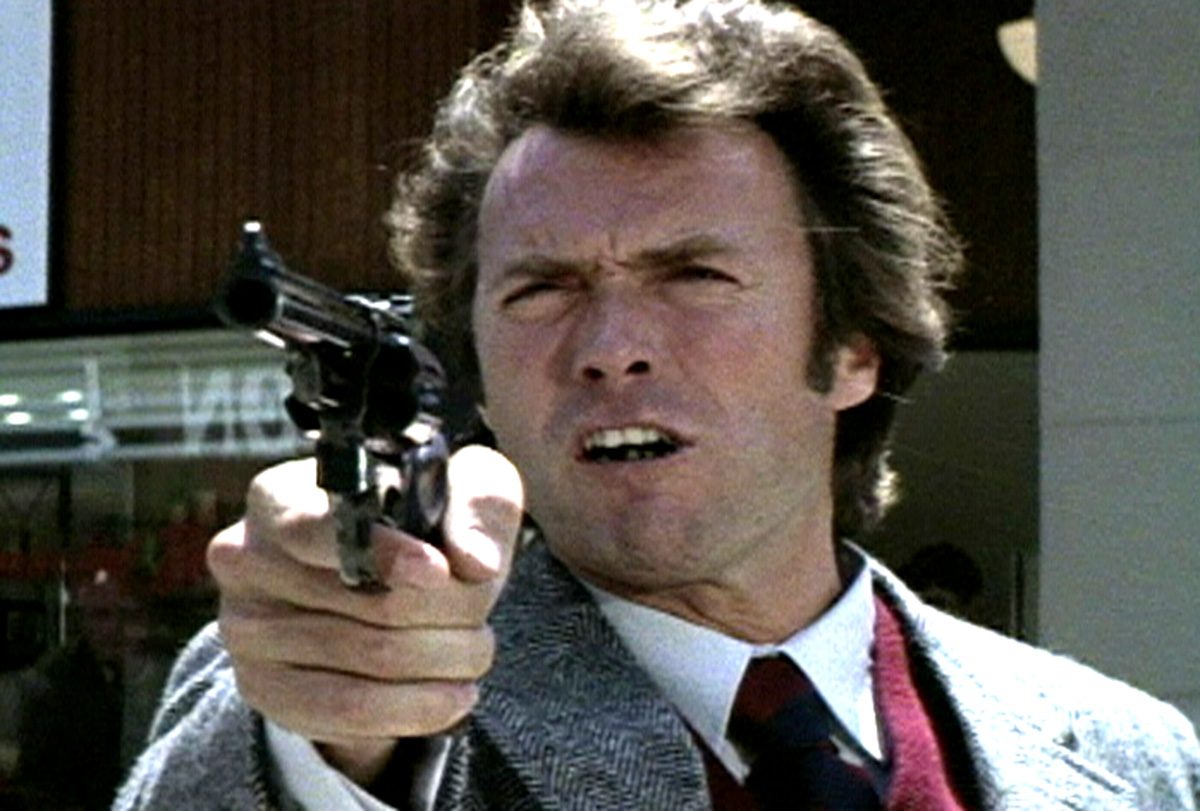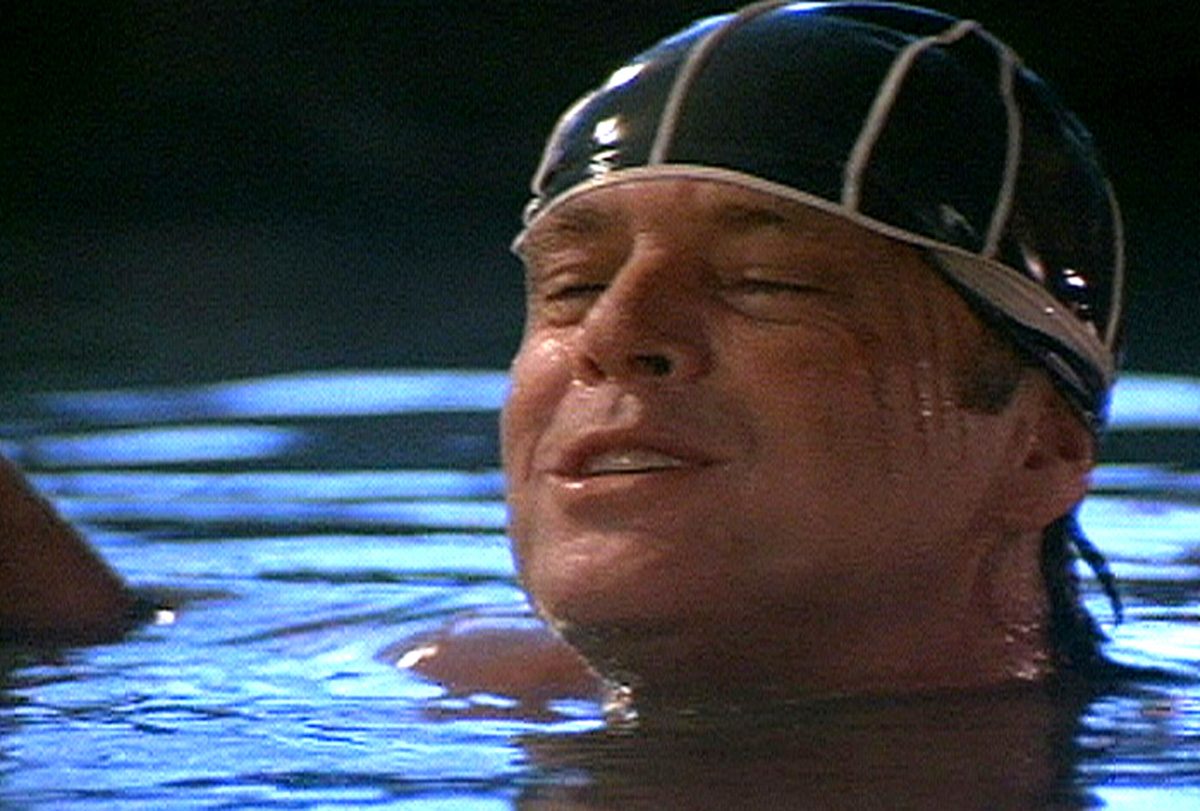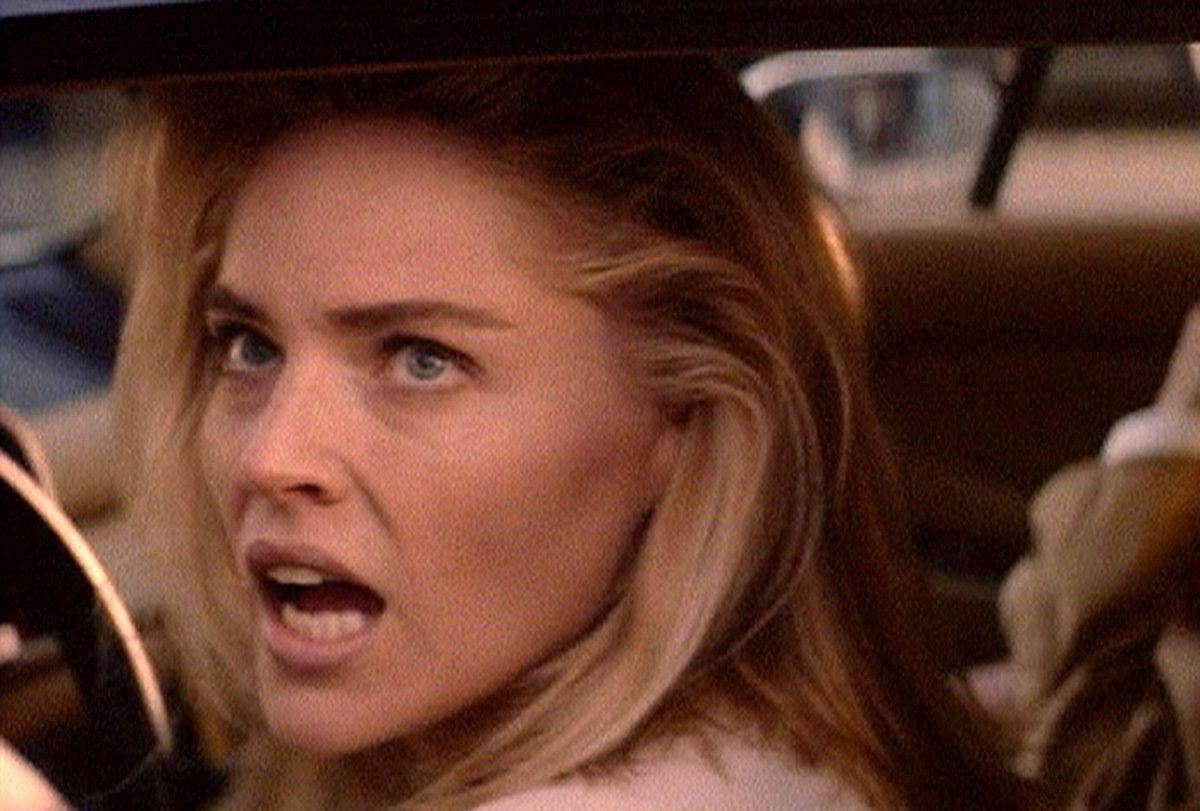
- This event has passed.
SOLILOQUY TRILOGY (2000)
(Three Short Films on DVD)
Total viewing time of all 3 films: 29 minutes
∑ Soliloquy (Clint)(1971 – 2000) Length – 00:06:57:22
∑ Soliloquy (Jack) (1987 – 2000) Length – 00:14:06:25
∑ Soliloquy (Sharon) (1992 – 2000) Length – 00:07:11:03
In the presence of the super-star, we are suspended in an eternal present tense – all else seems flat and homogenous. As suggested by its title, the Soliloquy Trilogy is a series of three monologues. My interest was in seeking a formal language to express the dramatic compression of space and time that occurs in the presence of celebrity. Each of the three films is driven by the same impulse (the desire to distil auratic presence to the extent that it might begin to unravel and flatten even as it unfolds before our eyes) and the same editing logic (each takes a well-known Hollywood movie as its starting point, zooming in on a single protagonist who is then stalked and isolated (cut and paste) out of every scene in which s/he appears in the movie).
Soliloquy (Sharon) (1992 – 2000) for example, is a tight edit of the psycho-sexual thriller Basic Instinct (1992). Basic Instinct is rigorously trimmed so that all footage is deleted except the moments in which Sharon Stone is speaking… or groaning… or giggling… or grunting. The new film thus isolates and chronologically strings together all of Sharon Stone’s verbal moments, in the process reducing the feature-length film to only slightly more than 7 minutes. A monochrome screen is dropped in to edit out those visual moments in which other characters are too prominent while Stone speaks. Other characters thus appear only momentarily and as a mute backdrop to the star. The mechanics of iconicity are somewhat vulgarly exposed with this liberation of the femme fatale from her narrative context and from linear dialogue with other characters. This isolation of the main character in the opacity of her own expression, what is effectively deprivation from the possibility of communication – may perhaps allude to the psychosis experienced by the individual who is alienated from interaction with others— from a space of social belonging.
The second and third films in the Trilogy obey the same editing procedures. Like (Sharon), they are exercises in the compression of narrative space and filmic duration. Soliloquy (Clint) (1971-2000) is a severely clipped study of the laconic Clint Eastwood character in Dirty Harry (1971), while Soliloquy (Jack) (1987 – 2000) is a concentrated portrait of Jack Nicholson’s character in The Witches of Eastwick (1987). Arrested from his co-stars and the narrative of the movie, every unadulterated snort and lusty growl that issues from Nicholson is made obscenely available to our scrutiny. As the soliloquies devolve into narcissistic babble (Sharon), taciturn repetition (Clint) or manic tirade (Jack), one is reminded of the extent to which language depends on context and community for its meaning. The sucking up of the space and context around each of the three protagonists results in three films that are disturbingly circular in structure. The soliloquy form is stripped of its usual transcendental angst and of the inner necessity that it usually implies. Instead, the three films in the Trilogy are driven by the non-sequitur logic of the sound bite – in these spiralling monologues, questions are asked but never answered, and comments are left hanging without response. Each is a short and uncomfortable journey into the grammar and punctuation of spectacular alienation. The trio of trapped protagonists lurch from casual utterance to proclamation to demand and back again, writhing and jerking like deer in the headlights of an oncoming car. In this sense, the series pays homage to Andy Warhol’s Screen Tests in which the non-presence of a script, director and narrative at times forces a direct and violent relationship between a secluded actor trapped before a camera and an audience attempting in vain to probe the interior depths of this actor.
Editing Procedures:
In the last couple of years, I have been interested in trying to develop an alternative to randomly expressive editing procedures, so as to escape the seduction of the increasingly lavish and special-effects-orientated technologies that artists can increasingly access. The work of Sol LeWitt has been my greatest influence in trying to develop non-expressive editing strategies. In his ‘Paragraphs on Conceptual Art’ (1967), LeWitt writes: “When an artist uses a conceptual form of art, it means that all of the planning and decisions are made beforehand and the execution is a perfunctory affair. The idea becomes a machine that makes the art.” In my most recent work, I have attempted to edit myself out of the process and to allow simple rules or ideas to almost mechanically predetermine my work, even imagining that it might at some point be possible to write down a set of rules that must be applied to existing footage, before walking away and allowing somebody else to see the process through. LeWitt has said of his wall-drawings: “If I give the instructions and they are carried out correctly, then the result is ok with me.” However, what is really interesting for me about LeWitt’s vision is the fact that it is one that he constantly and knowingly contradicts. So, in the ‘Paragraphs on Conceptual Art,’ LeWitt argues on the one hand that “If the artist wishes to explore his idea thoroughly, then arbitrary or chance decisions would be kept to a minimum, while caprice, taste and other whimsies would be eliminated from the making of the art…. To work with a plan that is preset is one way of avoiding subjectivity…,” but, in the very same essay, he also argues that “Ideas are discovered by intuition” (which is nothing other than subjectivity)! In the editing studio, I find myself fighting the LeWittian battle — — setting an arbitrary series of rules for myself to the ends of eliminating arbitrariness — caught in the battle between the removal of subjective decisions from the editing process… and the inevitable disruption of the work by the return of caprice and whimsy as random creative decisions sneak back into the editing process. The Soliloquy Trilogy is a case in point.



